Off-the-beaten-path Ukraine
After another long spell in Ukraine (our fourth in three years), we are getting quite accustomed to tracking down quirky museums in a country that is full of quirky museums but the Long Range Aviation Museum in the pleasant Ukrainian city of Poltava involved a bit more effort than just working out its location and then seeing how we could get there on public transport.
Where is Poltava?
Poltava is a small city in central Ukraine. Located on the Vorskla River, it is directly on the main Kyiv to Kharkiv railway line, making it a good place in which to break that particular journey. More quaint than Soviet in style (we can live with that every now and then :-)), Poltava was the site of a decisive battle in which Peter the Great and his Russian forces defeated a combined army of Cossacks and Swedes in 1709. You can visit the battleground and accompanying museum (which we did) plus there are a few churches and other bits and bobs worth checking out but thereafter it’s either time to move on to your next destination, or relax and people-watch on Poltava’s main pedestrian drag (Zhovtneva Street), or find something else to do.
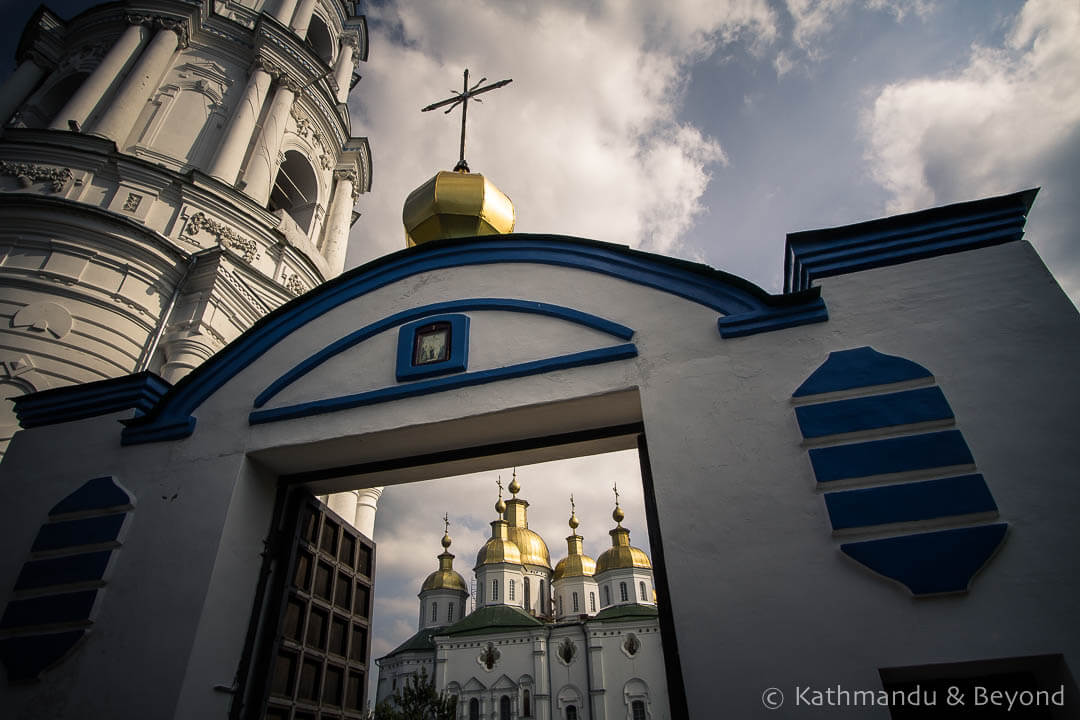
The Long Range Aviation Museum
We stayed at the Dream Hostel in Poltava. The staff were friendly and some of them spoke pretty good English. We were looking through some of our photos and one of the girls who worked there spotted some pictures of the Aviation Museum in Kyiv. ‘We have a museum like that,’ she said, ‘if you would like to go we can arrange a guided visit for you.’ Interested in visiting, we asked if we could just go on our own, i.e. no guide. ‘Sure,’ she answered and gave us some info on how to get there using public transport (see below). We followed her instructions and found it with no problems but, when we arrived, we soon discovered the museum was in fact on an active military base and we had no idea what to do next. Plonked on the outside of the sentry post, there was a number to call but we rang it several times and on each occasion, nobody answered. I was all for giving up (Kirsty has more patience in these matters than me!) but luckily the two soldiers on the gate intervened on our behalf and after a further 15 minutes, one of them made contact with someone from the museum. After 10 minutes more a guy came to meet us. He had a kindly face, was friendly and escorted us to the museum entrance, which was about a 10-minute walk across the base itself.
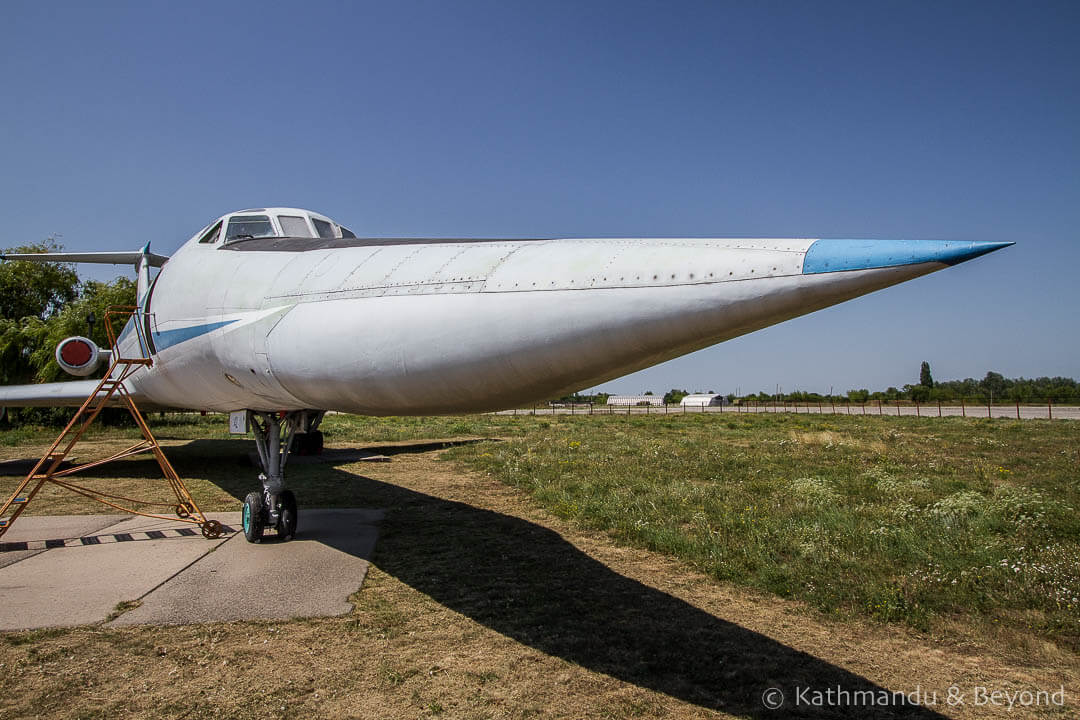
Good start, we thought, we were in. ‘Passports please?’ Oh no, we didn’t think to bring our passports and we proceeded to explain this to the small army (excuse the pun) of museum workers who were now congregated around us. Thankfully, they were also all friendly and were happy to take a digital copy of our passports, which we kept on our phones. Within seconds Kirsty was sending both documents to one of the museum workers via Viber. I have no idea what Viber is but thankfully Kirsty and the museum lady did and soon we were all sorted on the passport front.
Next was the payment. By this point, we had been introduced to interpreter number 1, a captain in the Ukrainian army. He asked us what we would like to see. We didn’t really know what there was to see and the options were a little overwhelming. There was a general entrance fee to enter the airbase plus an additional fee to enter the actual museum. Then there were the aircraft. They were about a 15-minute walk from the museum and also had a separate entrance fee. Furthermore, we could go inside five of the aircraft on display and each one of them also had an additional entrance fee!
We settled on just visiting the section where the planes were located and going inside all five of the ones you were allowed to enter. This worked out at 440 UAH in total (approximately £13, $17, €14). See below for a breakdown of what we paid. This amount is actually quite expensive for a museum in Ukraine. From our experience, usually, there is just a nominal fee of between 20 UAH and 50 UAH per person to visit museums in Ukraine but, we had put in a reasonable amount of effort to get this far, and weren’t going to be deterred by a couple of extra quid. We dutifully handed over the money, got our receipt (you always get a receipt in Ukraine!) and were all set to begin our visit.
We didn’t opt for the museum during the decision-making process as we didn’t know at that stage that we were going to get an accompanying interpreter and therefore thought it would be rather pointless. As it turned out, we were introduced to a second interpreter, a young corporal, who spoke excellent English plus they threw the museum in for free and so, accompanied by Mr Kind Face, Mr Captain, Mr Corporal and a couple of additional museum workers, we began our tour. (*)
(*) As is typical of so many encounters we have with local people, we often don’t introduce ourselves and forget to ask their names.
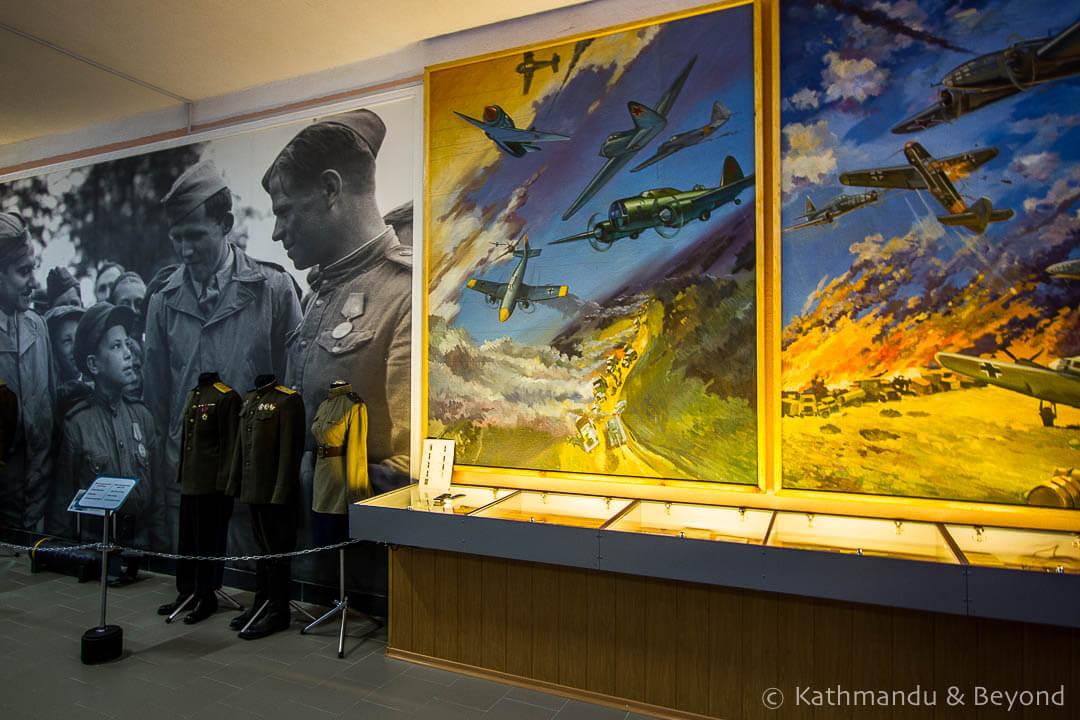
Inside the museum
We spent about 30 minutes in the museum, which focuses on Operation Frantic (June to September 1944), a shuttle bombing campaign that took place during World War II (or The Great Patriotic War as it is called in this part of the world). The operation involved American fighter planes taking off from airbases in the UK and Southern Italy and bombing the hell out of the heart of Nazi Germany and other parts of German-occupied Eastern Europe en route to three Soviet airfields in Ukraine, of which Poltava was one of them. After refuelling and rearming, the bombers would repeat the process once more on the way back to their base of origin. The operation was ultimately deemed not to be a success, with a lack of cooperation from the Soviets being cited as the main reason for this. Of course, the museum doesn’t portray it this way and has plenty of photos of Soviet and US military personnel getting on like a house on fire but it was interesting nonetheless and Mr Kind Face explained everything in great detail using his nice, pointy stick!
Fast-forwarding to modern-day Ukraine, Poltava Air Base (on which the museum is located) is once more an important military base and active in relation to the war with Russia in the east of the country. As we walked across the base to the section where the aircraft were located, we could clearly hear (but not see) the roar of jet fighters taking off within reasonably close proximity. Mr Corporal was incredibly candid about what the base was used for and as we got to know him, we would ask the odd question about the base and the war itself. He answered all of our questions and only once made a joke along the lines of ‘if he told us, he would have to kill us!’ He had been studying to become an English teacher in Kyiv but had joined the army under compulsory subscription a few years earlier and had decided he wanted to make a career out of it rather than return to his studies.
By the time we reached the planes, all three of our guides had made the assumption that we were aircraft nerds. This is not the case I hasten to add. We like all things retro, but we are not plane-spotters. We explained this but it didn’t stop them from proceeding to go into incredible detail about the aircraft on display – fuel consumption, top speed, the tonnage of bombs carried, etc. They would compare the aircraft on display with other Soviet models as well as American ones and talk about designers as if they knew them personally. Only the name Tupolev registered with either of us and most of the info went in one ear and out the other. Needless to say, we listened dutifully, nodding approvingly and making appropriate expressions of impressiveness when we thought the occasion warranted it.
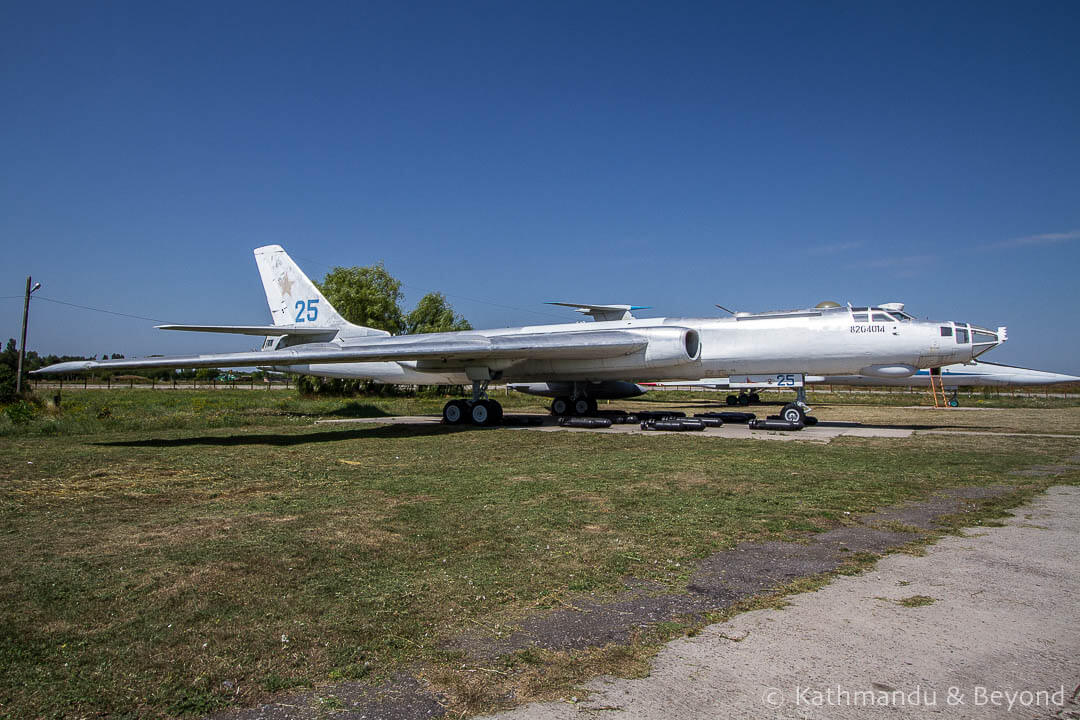
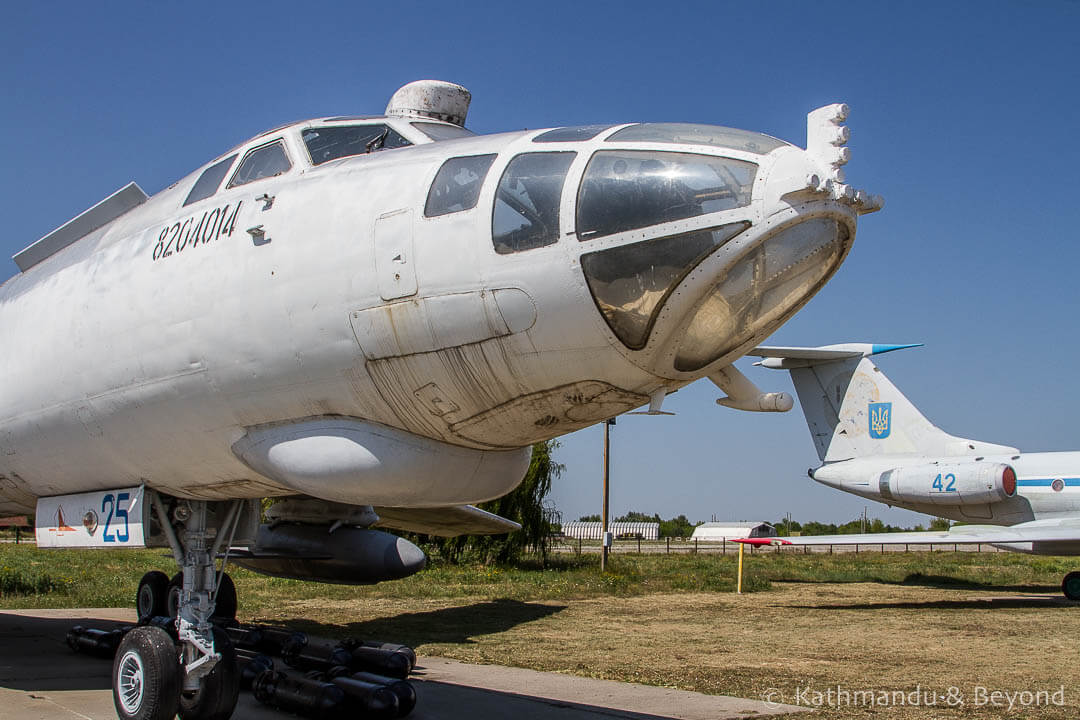
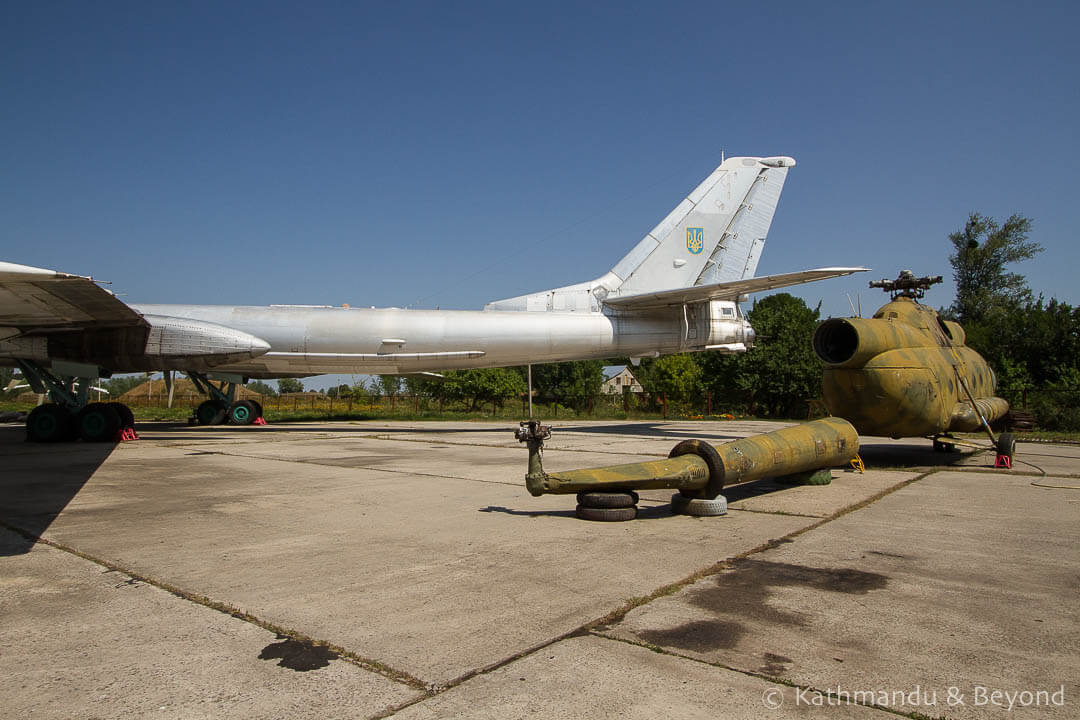
For the record, and I looked this up, by the way, the following aircraft are on display:
Nuclear-capable aircraft-carriers
Tupolev Tu-16 Badger
Tupolev Tu-160 Blackjack
Tupolev Tu-95MS Bear
Tupolev Tu-22KP Blinder
Tupolev Tu-22M3 Backfire
Fighter aircraft
Sukhoi Su-15TM Flagon
Antonov An-26 Curl
Antonov An-2 Colt
Tupolev Tu-134UBL Crusty-B
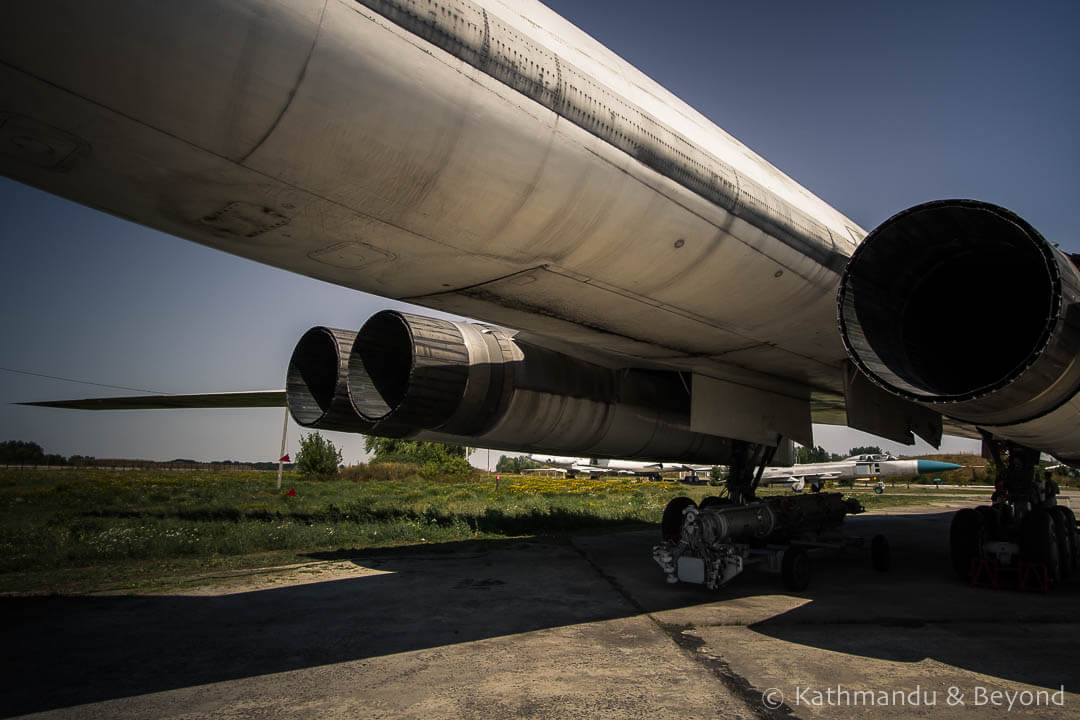
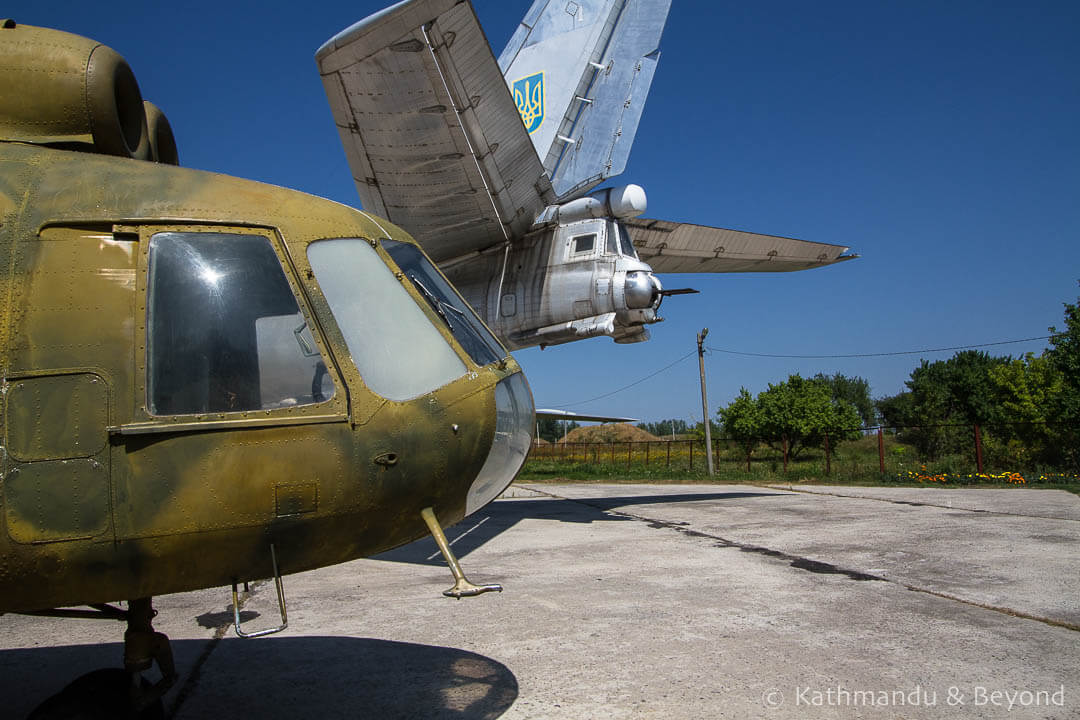
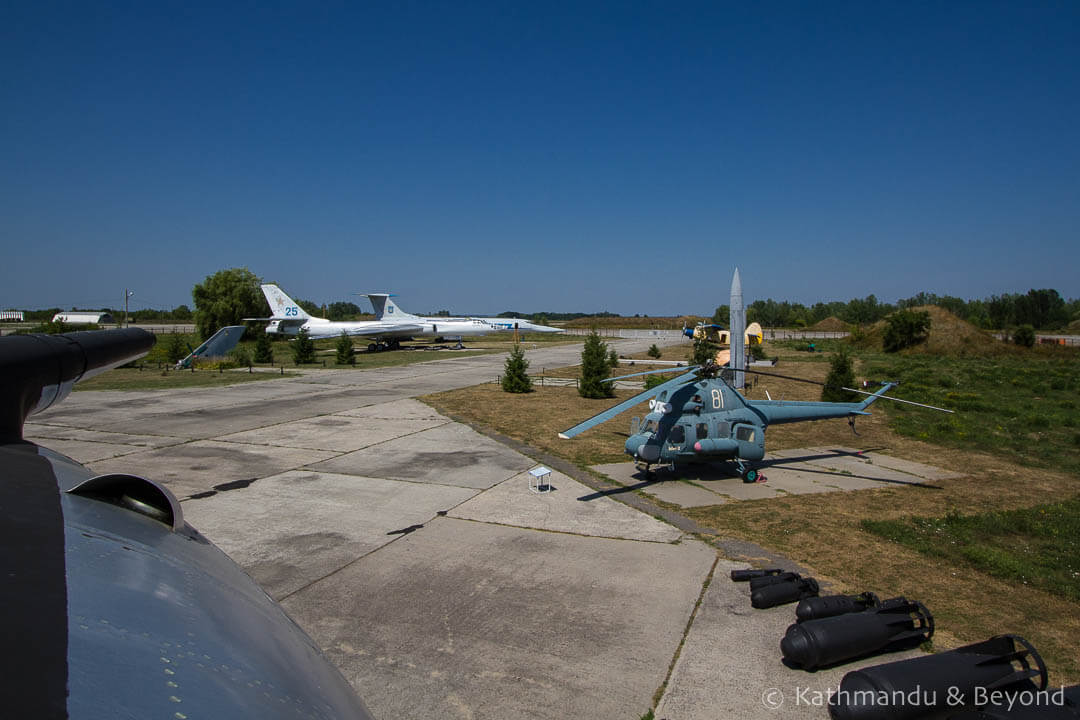
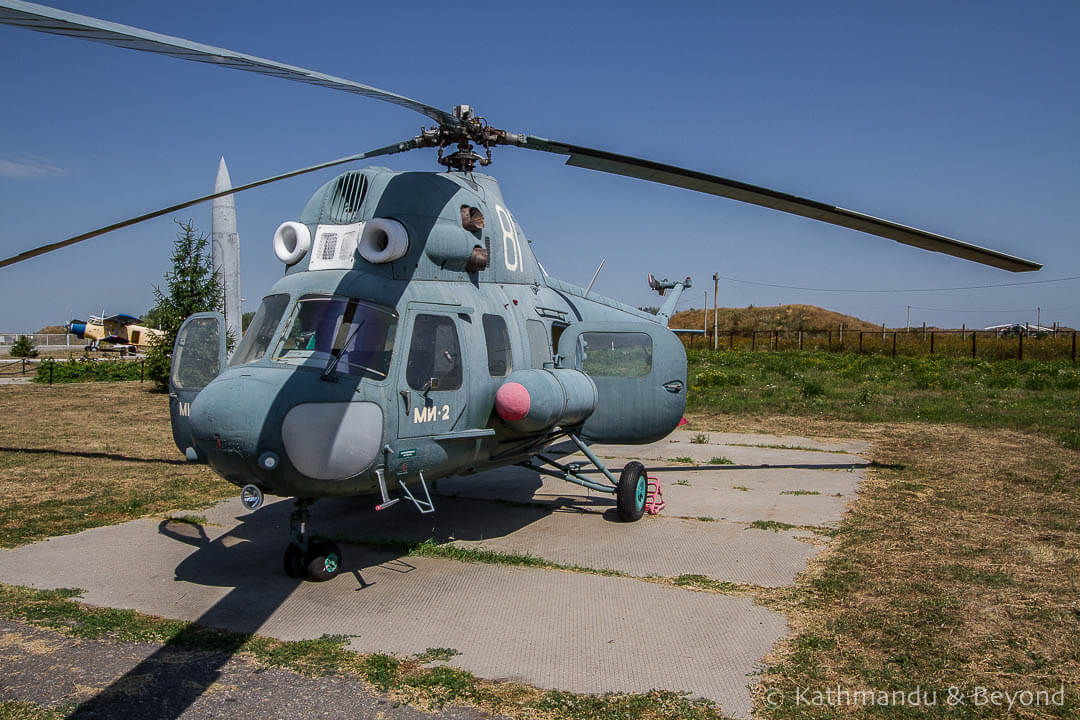
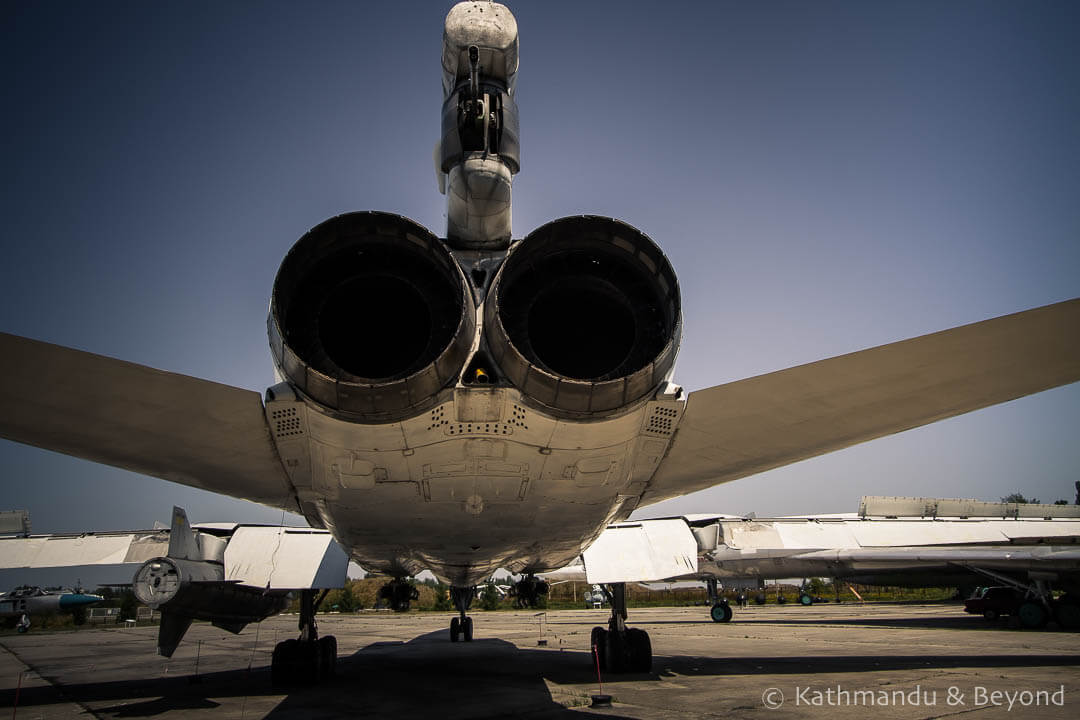
Every now and then we would crack a joke or steer the conversation away from the difference between the fuselage on a Tupolev Tu-16 Badger versus that on an Antonov An-2 Colt. On one such occasion, I asked Mr Kind Face (via Mr Corporal) how he knew so much about the planes and what he did before working at the museum. He seemed thrilled that we had asked him this question and it turned out that he had been part of the crew on a bomber that was very similar, but not the same (he took great pains to point this fact out) to the Tupolev Tu-160 Blackjack during the Cold War.
He must have been waiting for this moment as he proceeded to tell us (and Mr Corporal and Mr Captain – they were equally enthralled) nonstop stories about his time in the Soviet Airforce. This was more like it, we thought, and we fuelled his enthusiasm by asking a ton of questions. He had been in Cuba and Afghanistan, he told us and flew many sorties over the Atlantic taking reconnaissance photos for the Soviet Union.
There were funny stories also. Admittedly they got a little lost in translation, but one of them involved him and other Soviet airmen meeting up with their American counterparts some years later after the Cold War was over. He said the evening started a bit frosty but after vodka, both sides loosened up and started spilling the beans about how they used to wind each other up. There was one story about an American gunner (in the tail of the plane) smoking while out on a mission. Mr Kind Face’s crew had spotted this, presumably via their spying gear, and grassed the gunner up to his American superior (don’t ask me how!). The superior had then told the gunner that, when they landed he was personally going to come back to gunner’s position on the aircraft and check for himself. Apparently, as a result of this threat, the gunner swallowed the cigarette butts in order to get rid of the evidence.
‘Never let a bit of truth get in the way of a good story’ is my motto and I thought the tale was an amusing one regardless of its doubtful authenticity.
After our visit (about 2 hours in total), we said our goodbyes and were escorted off the base by Mr Kind Face, from where we walked to the main road to catch the bus back to the centre of the city. It had been a good morning!
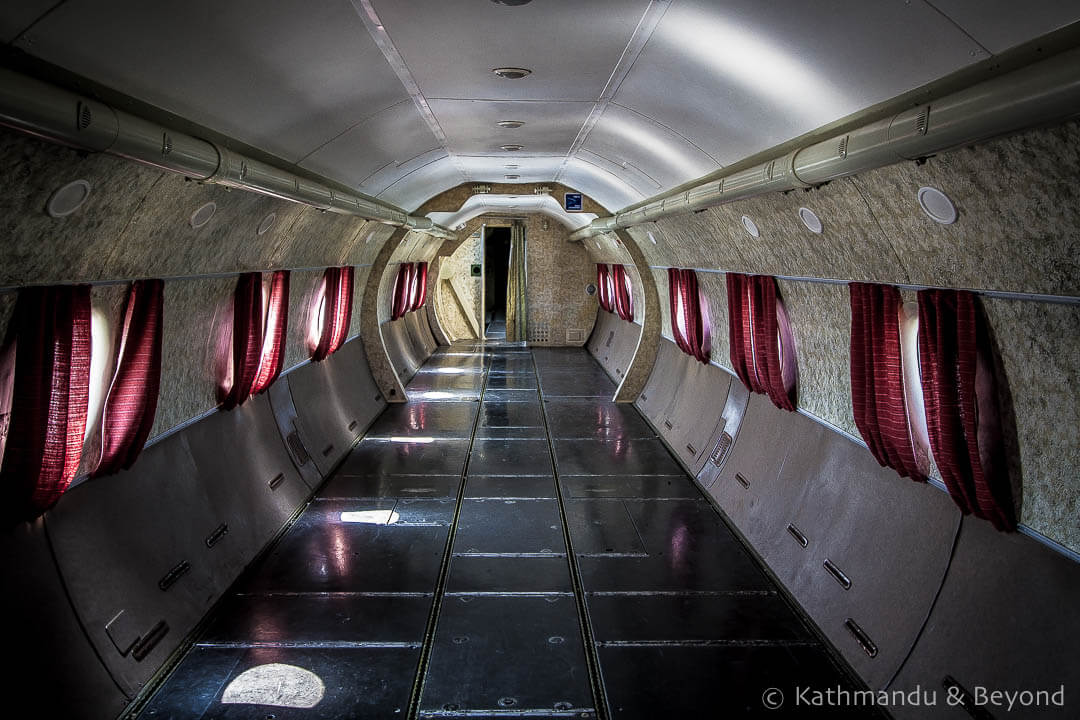
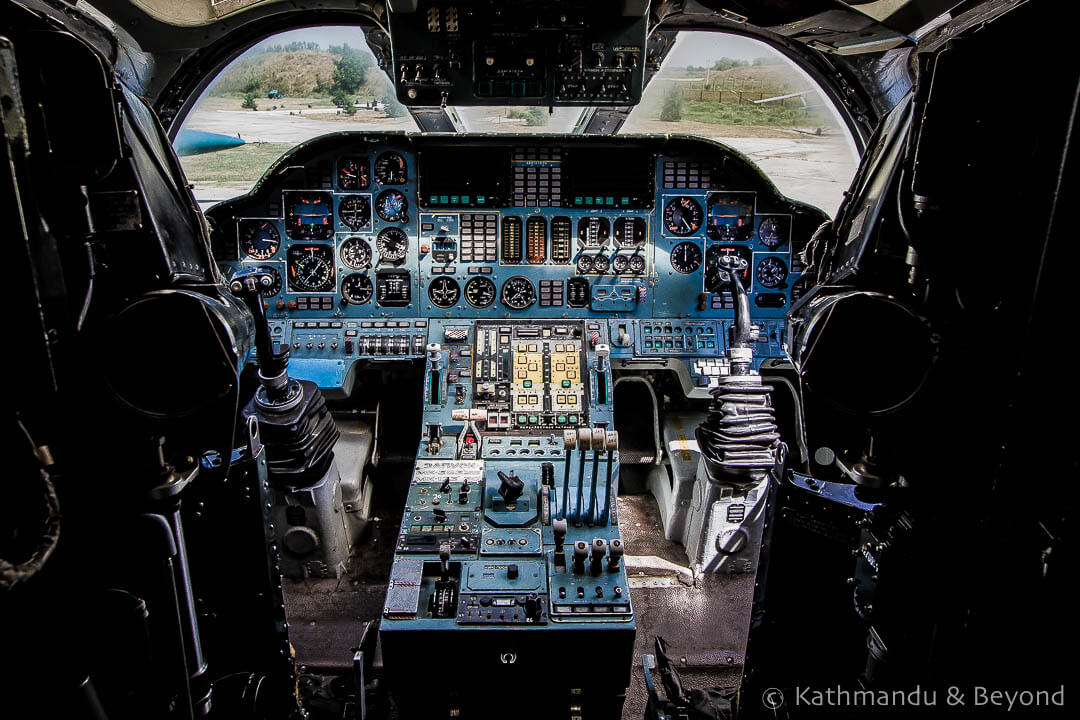
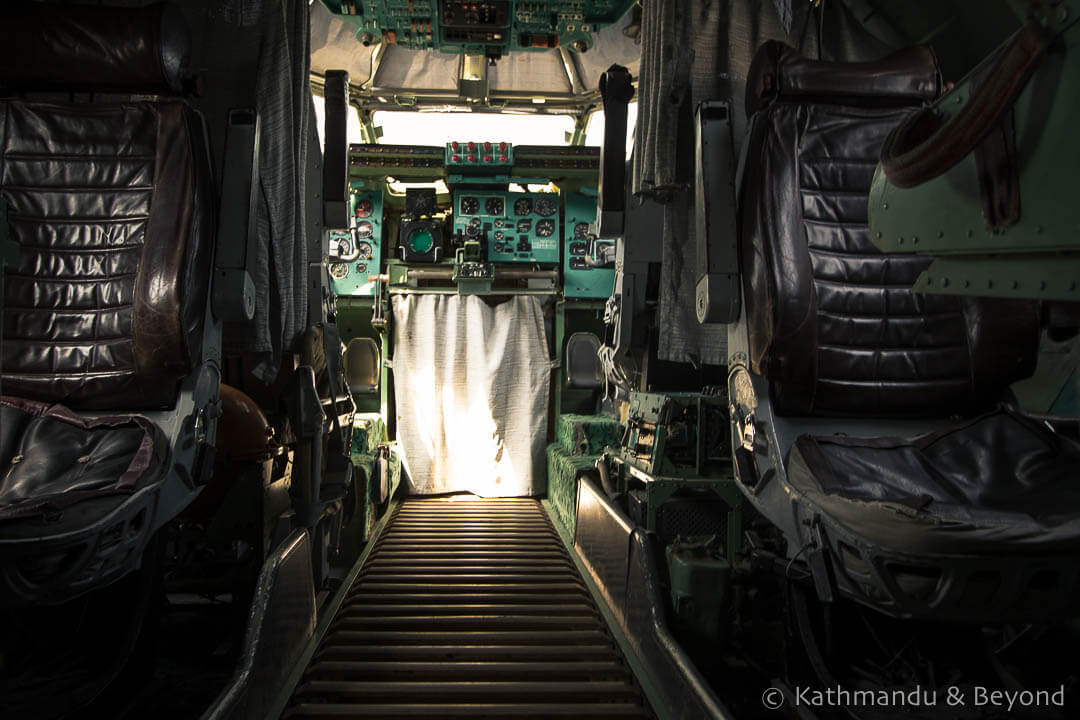
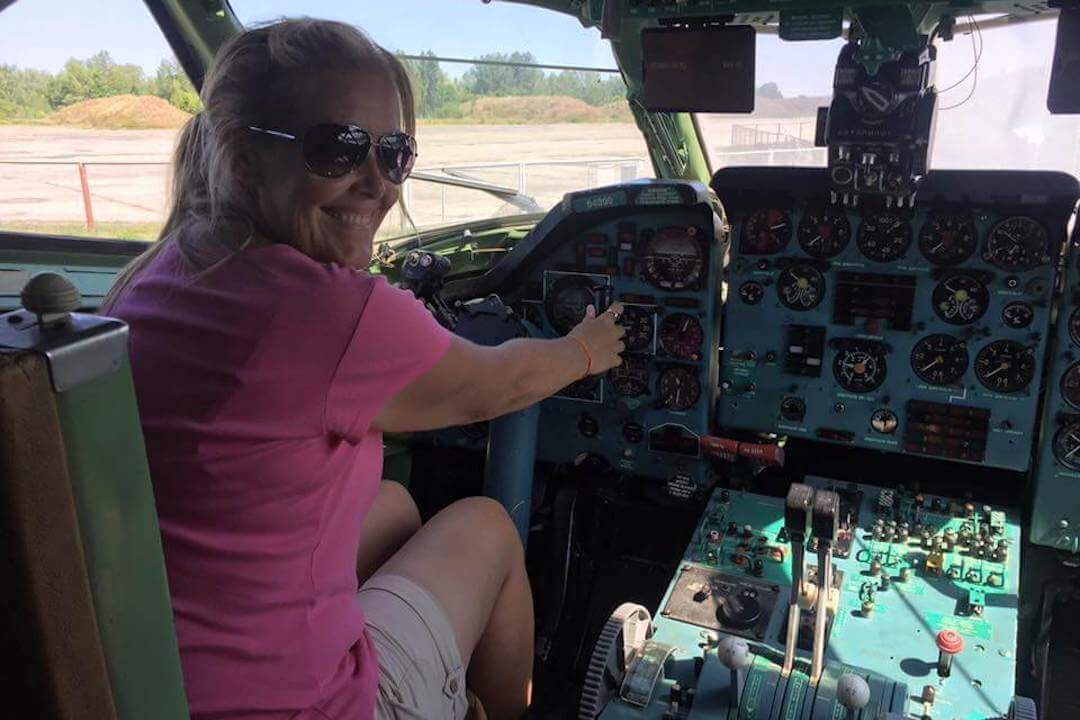
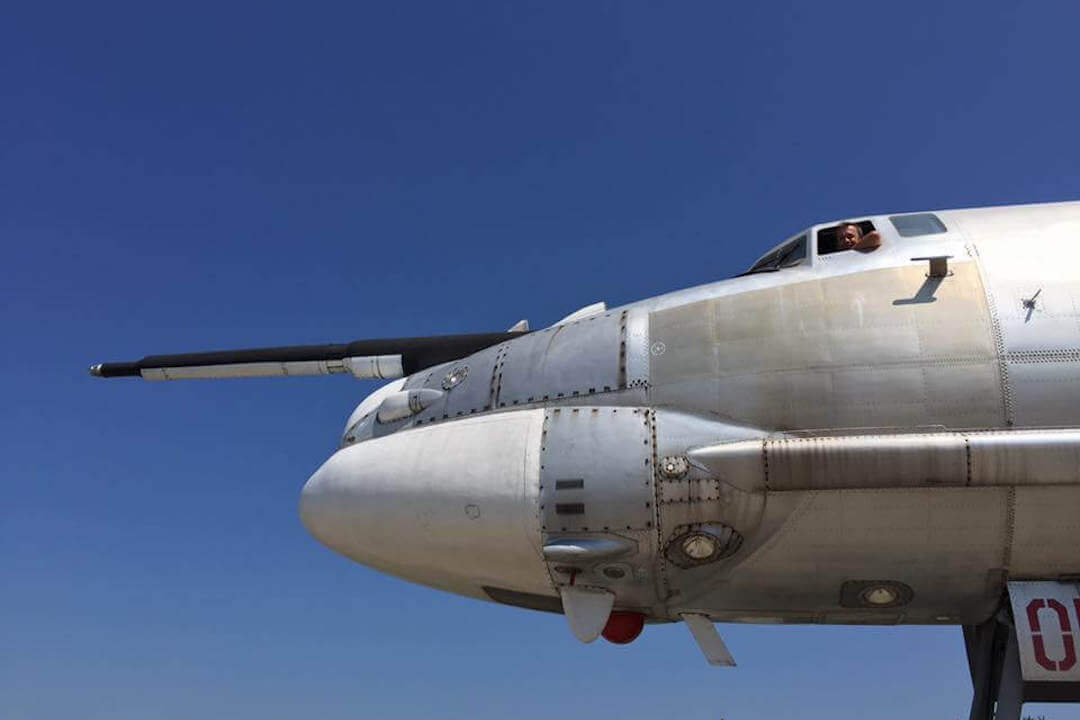
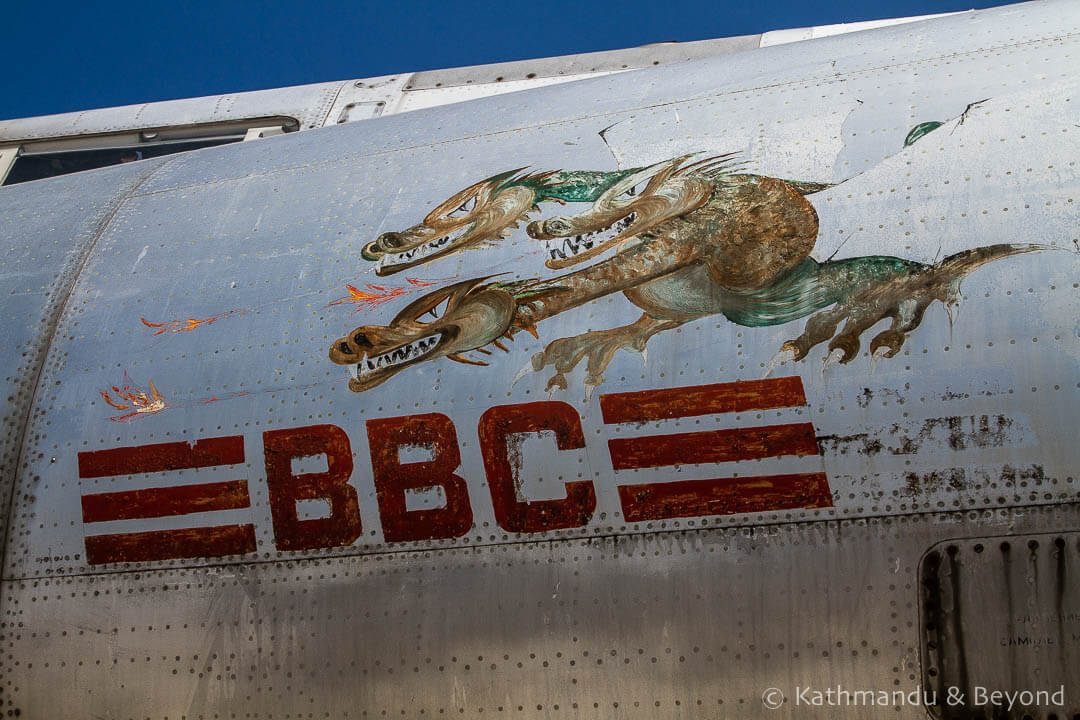
Visiting the Long Range Aviation Museum
Turning up randomly worked out for us, but it would be safer to get your hostel or hotel to phone ahead to save a lot of waiting around. The telephone number is 066 8534902.
The museum is open daily, except Monday, from 10am to 4pm.
Note: it is sometimes called the Strategic Aviation Museum.
REMEMBER TO TAKE YOUR PASSPORT.
How to get to the Long Range Aviation Museum by public transport
Of course, the easiest way to get to the museum is by taxi but if like us you prefer to do things (the hard way) on a budget, this is what you need…
The most direct route is bus number 2 which starts at Krytyi Rynok (Poltava market) and makes a stop on the Korpusnyi Park roundabout and terminates very close to the gates of the base.
Alternatively take one of many transport options that go along Marshala Biriuzova Street (Маршала Бірюзова вулиця) (e.g. Bus #20, 44, 51 or 56; Trolleybus #4 or 5; or Marshrutka 41, 54, 57, 61 or 62) and get off at this point (49°35′59.45″N 34°30′11.11″E) and walk down Petra Yurchenka Street (Петра Юрченка вулиця) – you’ll see a small memorial featuring an aeroplane propeller on the street corner. Walk straight down the road for about 500 metres and at the end of it, you’ll see the gates to the military base. On the way, you’ll pass a monument to the heroes of the ‘Heavy Bomber Aviation Division’ in the form of a jet fighter.
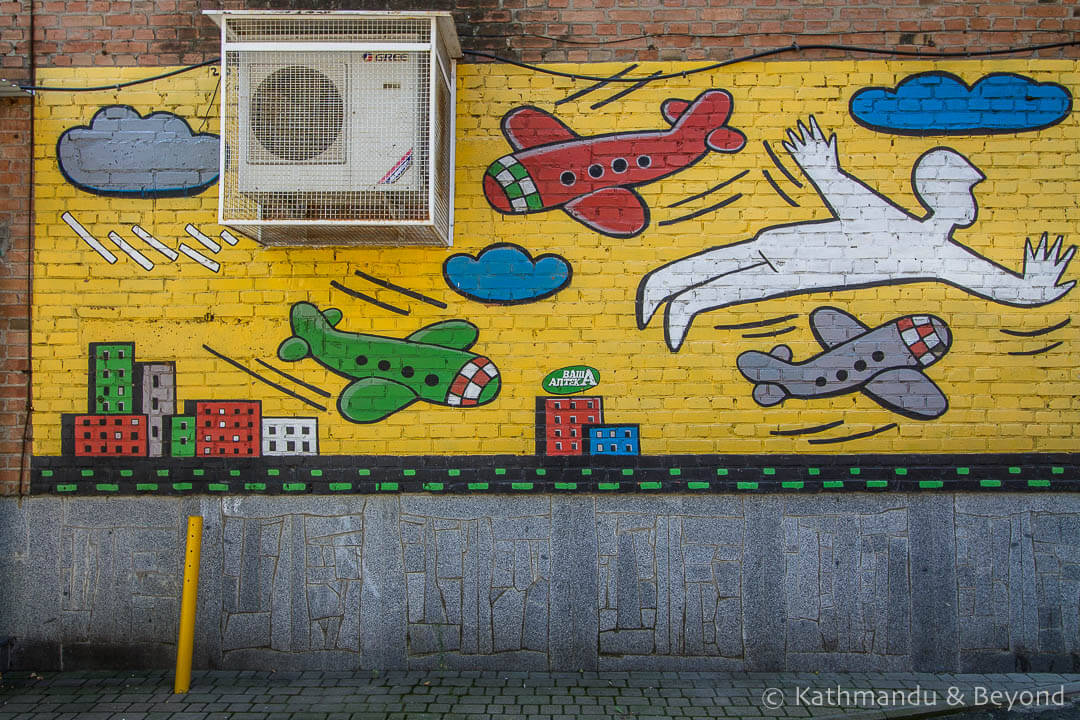
Entrance fees for the Long Range Aviation Museum
As mentioned above, we’re not quite sure how it was calculated but we paid 80 UAH each for entry to the airfield part of the museum which included our entourage of one museum curator and two army guys who acted as translators. We also paid an 80 UAH camera fee (see below). Additionally, we paid 5 x 20 UAH each to enter five of the aircraft.
There weren’t any entrance fees displayed so we just paid the amount scribbled onto a scrap of paper.
We picked up a leaflet for the museum which was in Ukrainian and therefore couldn’t read at the time. We have since translated the entry fees as follows:
Basic adult ticket price: 20 UAH
Children and students: 10 UAH
The exhibition halls and the outdoor airfield are two separate entrance fees.
Photo and video fee: 20 UAH for ‘personal’ and 150 UAH for ‘professional’ cameras. They must have decided our DSLR fell somewhere in between the two!
Guided visit: 100 UAH
Entrance to five aircraft: 20 UAH each per aircraft (10 UAH for children)
Is it worth visiting the Long Range Aviation Museum?
We would say so, but then we are biased when it comes to quirky museums and visiting unusual places. The Aviation Museum in Kyiv is definitely more impressive, cheaper and easier to visit than the one in Poltava but the museum was well set out and the aircraft on display were, well, very Soviet, which is what attracted us in the first place. But, it was the opportunity to interact with these three Ukrainian guys which made the Long Range Aviation Museum a worthy experience for us personally. Ukrainians may look sour-faced but actually, they aren’t (it’s a communication thing and that’s our problem given we only speak about three words of Ukrainian!) and we had good fun with these guys for the couple of hours we were with them.
READ MORE POSTS FEATURING UKRAINE
IF YOU ARE A BIT OF AN AVIATION GEEK… PLEASE SHARE THIS POST!
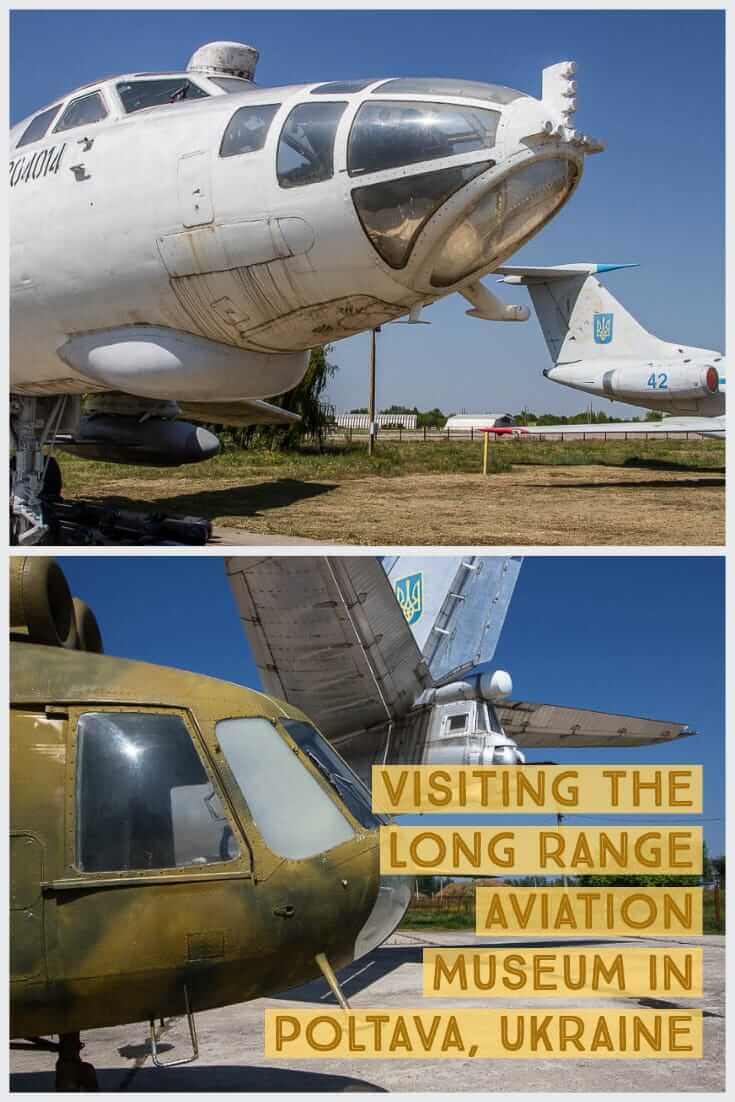
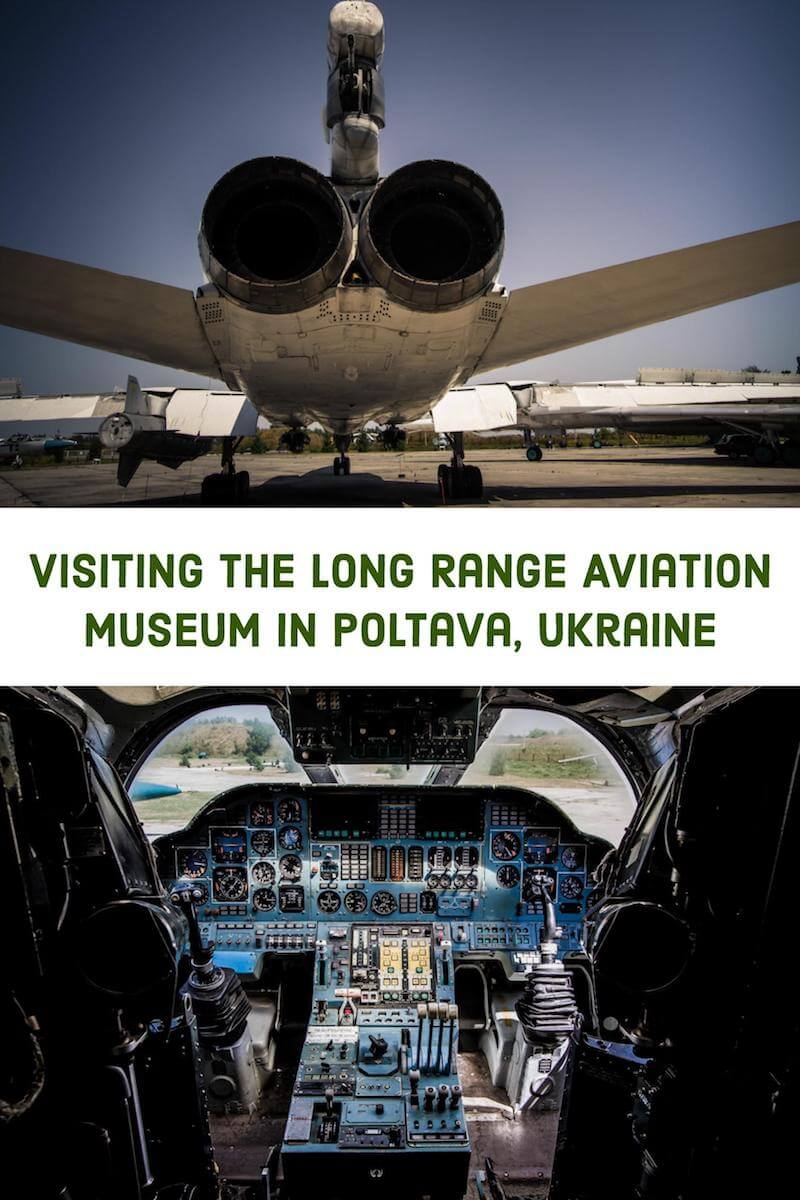
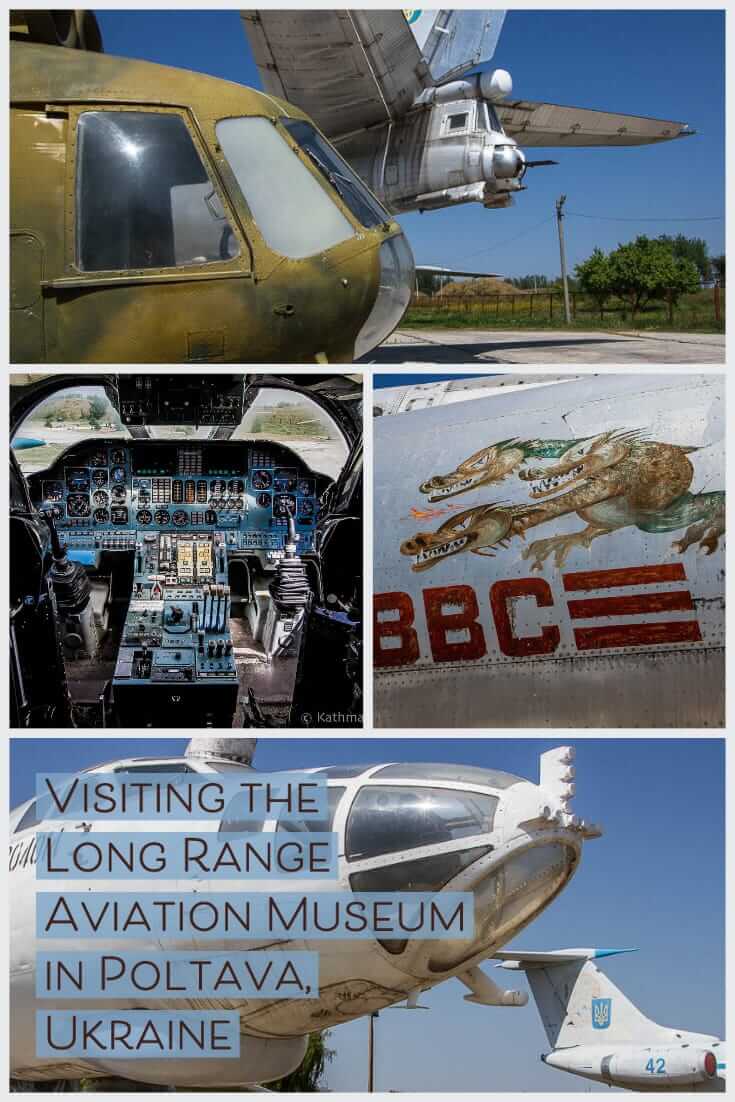

Sounds like a fun visit … and thank God to Viber 😉 Surprised like you with how expensive it was.
It was great fun and totally unexpected. The staff in our hostel in Poltava suggested it but hadn’t been themselves and so couldn’t tell us anything about the place in advance. In fact, Ukraine in general is full of surprises – it’s fast becoming one of our favourite destinations!!
Wow, what a neat find!! My brother came to visit us in Ukraine a few years ago and he would have loved to see this place. He was fascinated by all the old aircraft and equipment near Rodina Mat in Kiev… this place looks even cooler. I’m going to forward him your post to read!
By the way, any plans in the works for Ukraine visit #5? 🙂
Hi Katherine, Thank you for your comment. If you brother enjoys Soviet-era aircraft then I can highly recommend the State Aviation Museum in Kiev. In a way, this was even better than the airbase in Poltava. The experience was different because of the people we met in Poltava but the museum in Kiev has more planes as well as other interesting stuff. We have visited that one also and wrote about it here (https://www.kathmanduandbeyond.com/alternative-kiev-state-aviation-museum/). There is a great aviation museum in Belgrade also, if you or your brother are ever passing through!
As to Ukraine for a 5th visit – that is certainly on the cards and we are considering braving the cold and visiting in the winter months – we’ve got this thing about seeing the country in the snow!!